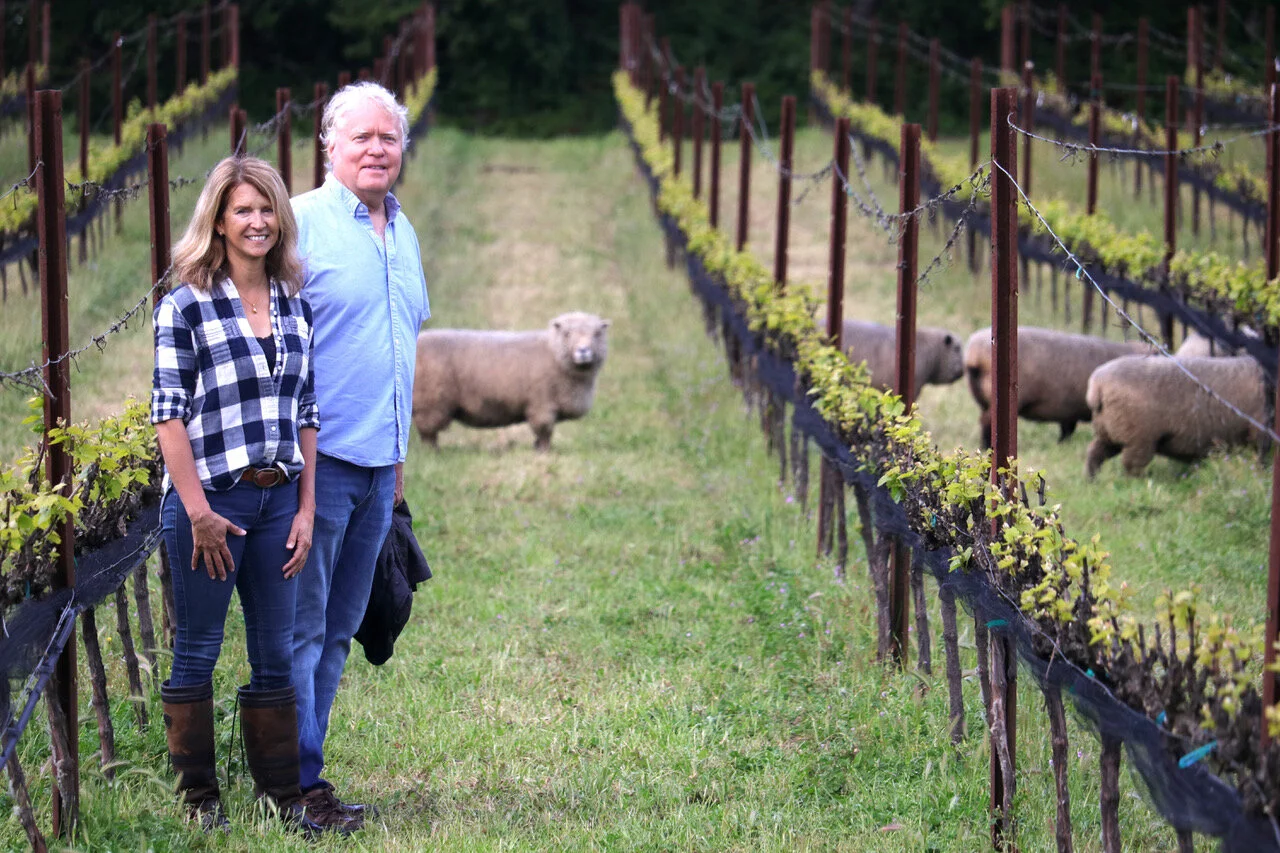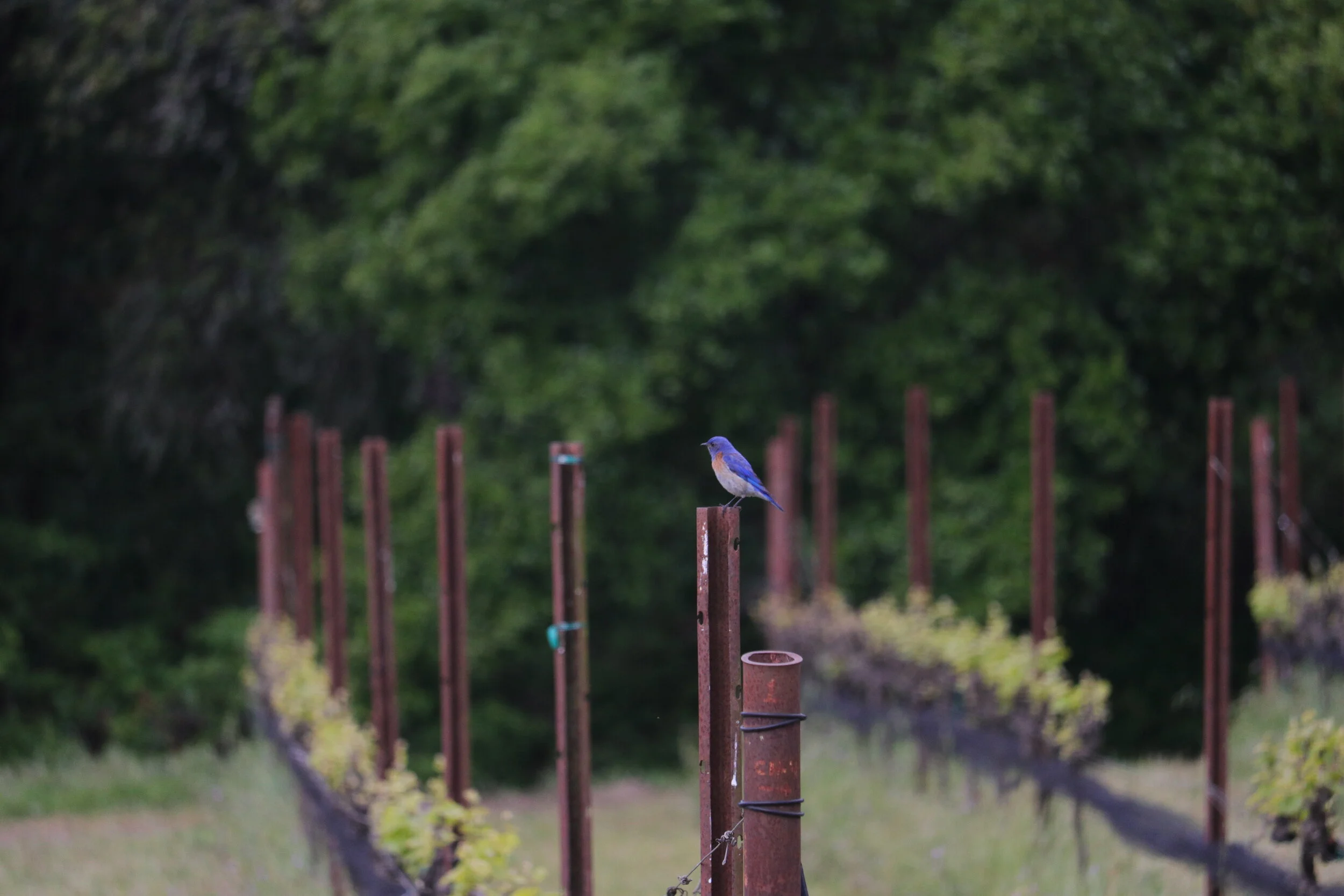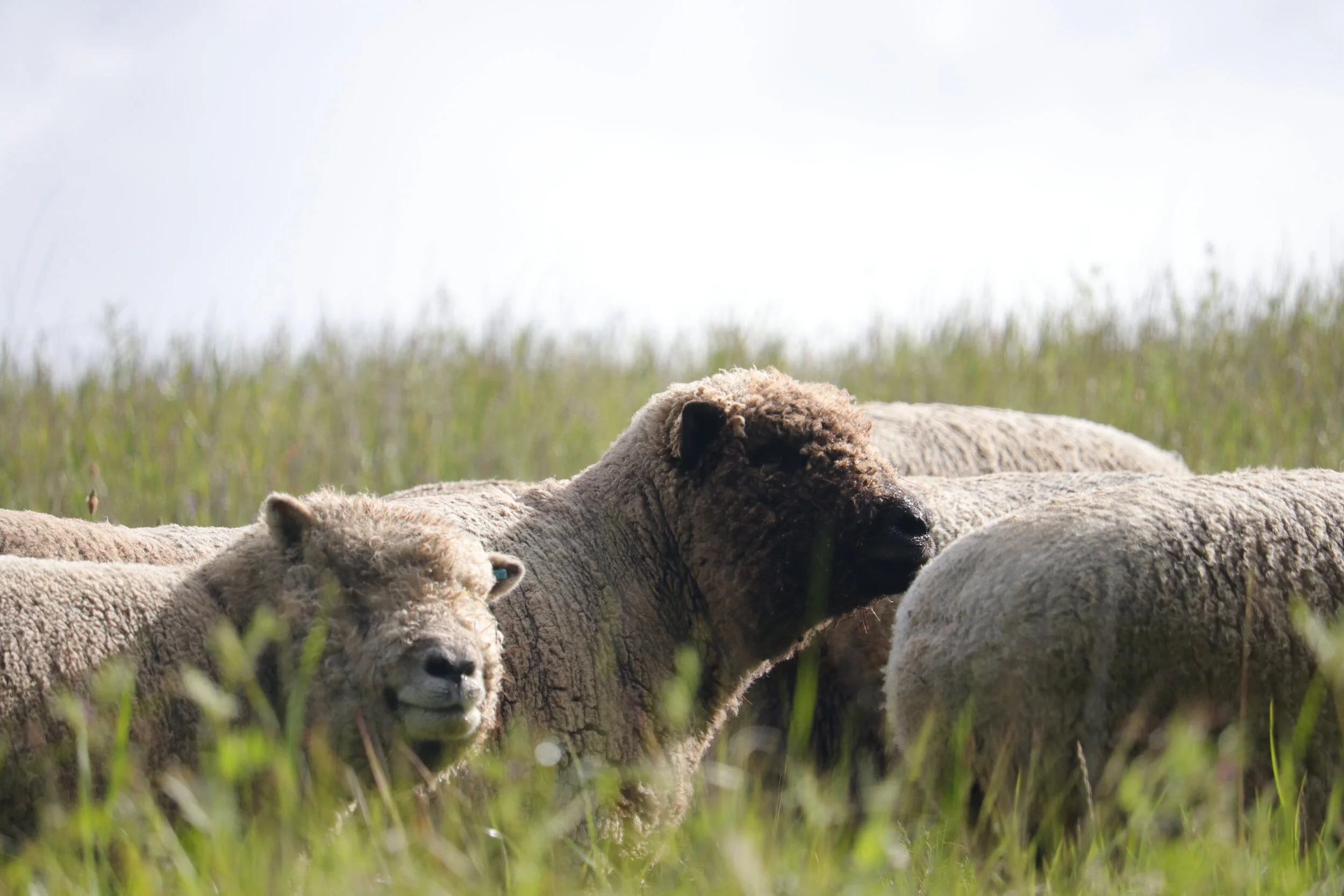"If one advances confidently in the direction of his dreams, and endeavors to live the life which he has imagined, he will meet with a success unexpected in common hours."
— Henry David Thoreau
Who We Are…
Pamela & Stephen Storrs (and their babydoll southdown flock)…
Stephen Storrs and Pamela Bianchini-Storrs began Storrs Winery with the harvest of 1988. Both trained as winemakers at UC Davis, they had worked and consulted for a number of wineries prior to starting their own, including Domaine Chandon, Felton Empire Vineyards, and Almaden. Consulting duties also included serving as the first winemakers for Scheid Vineyards of Monterey whilst in the early stages of their own emerging winery. Beginning with their very first vintage, they focused on the Santa Cruz Mountains – the cool-climate, marine-influenced appellation in their backyard. Having worked in this terrain for years, they knew there was no better climatic match in California for the classic Burgundian varietals of Chardonnay and Pinot Noir. Their focus on Pinot & Chardonnay was further honed with a fortuitous trip to Burgundy in the 1980’s when wineries and winemakers were quick to open their doors and share their love of these finicky varietals. Their devotion to these two amazing grapes has only continued to grow with their winery. Along their path, they have won multiple sweepstake and prestigious awards, including the Best of Show at the California State Fair and San Francisco International Wine Competitions. In 2001 they realized a dream with the purchase of 60 acres in the Pleasant Valley district of Corralitos in the Santa Cruz Mountains A.V.A. establishing their estate vineyard in 2007. In 2012, they broke ground for construction of their new eco-friendly winery on the site of a former quarry that they discovered on their property. In 2018. the new winery & tasting room opened to the public. Today, they continue to pursue excellence with every vintage and celebrate the terroir of their unique region in every bottle. Integrating more regenerative practices to enhance their soil and biodiversity is always on the agenda.
How We Do What We Do…
Organically, sustainably, wildlife-friendly
Bluebirds at Hidden Springs hunt for insects that can be vectors for vine disease.
Clone 667 Pinot Noir
Our southdown ewes help with weeds and contribute to biodiversity in our soils
When we purchased the land in Corralitos in 2001, we had a newborn in the house and our boys were quite young. Working in the Santa Cruz Mountains over the previous 15+ years, we had developed many friendships with leaders in the organic farming community. These factors coalesced to make organic farming the only choice when it came time to choose how we would farm. At first the depleted soils from a century of apple farming would allow only a sparse set of weeds to grow. So we began to seed the fallow land with mixed cover-crops to combat the infertility and to raise the organic matter in the soil – so vital to vine nutrition and water retention. Vetch, bell beans and oats soon began to spring from the soil and earthworms began to appear in abundance. We invested in some unusual farm equipment that did more than just till the soil: it spaded, or double-dug, the cover crop in each spring to further build the organic matter. Before planting, working with the Natural Resource Conservation Service (NRCS), we graded the land to slow run-off from rains and eliminate as much erosion as possible. This practice, as well as a UCSC research-based groundwater recharge pond, allows us to capture every drop of rain that falls on our property and send it to the aquifer below. We also fenced just the portion of our land required to protect the vines while still allowing the deer and other local fauna to migrate along the edges. Finally, in the summer of 2007 we planted our first vines. We chose clones 4 and 17 for our Chardonnay planting, and Dijon clones: 115, 667, 828; Pommard and 2A for our Pinot Noir. Our experience working with fruit from Pleasant Valley and throughout the Santa Cruz Mountains had taught us which clones thrived. We also knew that with thoughtful blending of clones, a winemaker can really bring out the terroir of a site in the resulting wine. Working with the Wildfarm Alliance, Community Alliance with Family Farmers, and the Wildlife Conservation Board of California, we implement many practices that supported sustainability. Using hedgerows, native grass filter strips and wildflowers, we encourage beneficial insects and pollinators, and prevent soil from entering the nearby riparian corridor to support the salmon that spawn in our watershed. We mounted barn owl boxes & raptor perches overlooking the vineyard to encourage predation of rodents – over the ensuing years, the predators in our midst have worked nearly as hard as we have to reduce the population of pesky gophers and ground squirrels that plague mountain vineyards. We installed bluebird & bat boxes whose residents voraciously consume vexatious insects, such as leafhoppers and coddling moths. In 2011, we added a small flock of babydoll Southdown sheep to work as weed control in our vineyards. These hardworking ewes have gone on to so much more. We have discovered that their contribution extends well beyond new lambs and wool…. the ruminant gut of a sheep contains microflora that greatly enhances the biodiversity of our soils in the form of bacteria and mycorrhizae. Since grazing these gentle creatures amongst our vines, we have found the flavor profile of the resulting wines to be more complex with greater minerality and backbone than we had expected. Truly a win-win…. wool comforters and ever more exceptional estate wines.
Harvest at Hidden Springs
Lisianthus —Lizzy— making her way among the vines
Where We Do What We Do…
Quarry Winery in Corralitos
In 2012, we began construction on a new winery facility on the Hidden Springs estate vineyard property in Corralitos. In 2018, we swung open our doors for a Grand Opening that celebrated our local farm-to-table restaurants matching them with nearby organic farms and our wines that we create to the distinct terroirs of the Santa Cruz Mountains. We were honored to be able to donate the proceeds from this unique community-centric event to the Pajaro Valley Community Health Trust which supports health care for farmworkers and others in our neighborhood.
Since that day, we have begun production in our very efficient building in a rather unique spot. Formerly the site of a sand and gravel quarry, the bowl shape provided an ideal locale for the ultra-efficient construction. The walls that measure two feet thick are filled with an uncommon combination of soy-based foam for insulation, an interlocking foam brick, all held together by a fiberglass rebar system. We then sheathed the walls in shotcrete and skimmed them with a coat of smooth plaster which allows them to achieve an R-factor of 100. Foam panels sandwiched between layers of concrete coated on the top with a silicon elastomer comprise our roof panels; their efficiency has been measured at R-60 (nearly five times that of a refrigerator). Working in as optimal a climate as the Santa Cruz Mountains in such an efficient building, we are able to accomplish all of our cooling needs with only cold mountain air brought in at night by fan. Another efficiency… we save countless hours of idling in traffic with loads of grapes aboard because the majority of our vineyards are only a short drive away within Corralitos.







